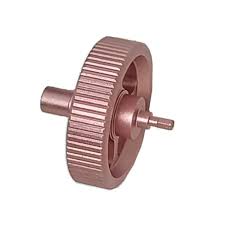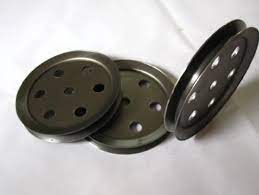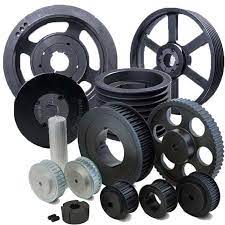Product Description
| Product Description | |
| Products name : | manufacturer custom cnc machining service ,Precision CNC Turning Service High tolerance CNC Machining Parts.OEM service custom Alluminum CNC Machining parts.OEM Customized CNC lathe aluminum motorcycle parts.OEM service customized CNC turning milling aluminum pulley |
| Material : | Aluminum alloy 6061. 6063. 7075 .5082 and etc . steel alloy /stainless steel , titanium , brass/ copper , plastics and so on |
| Surface treatment : | painting , coating , oxide , anodized , powder coating , or according customer require |
| MOQ : | 10pcs |
| samples : | first will do samples send to customer test , after confirmed quality is ok , then do production |
| Package : | each parts will use foam pack , outer is wood box or pallet , strong package guarantee products no any damage ,injured during transportaion way. |
| Services : | customized , OEM/ODM service . machining service |
| Application : | automotive spare parts , motorcycle parts , machine , electronic spare parts etc |
| Market : | North American , european, middle east, african , Canada, Englad and so on |
Products show :
Package :
Our company :
About Us :
Integrated precision CNC machining solutions supplier
As an OEM /ODM manufacturer ,quality and service are our hallmark . Especially your project
Requires high accurate and surface treatment .
Our services is capable of handling larger quantity custom components in a range of
CNC machining. Milling ,turning ,die-casting ,sheet metal stamping etc
These CNC deep processing products active in automotive ,telecommunication devices,
electronic, industrial machinery , medical, aerospace ……..
We are always customers trustworthy and reliable partner and supported
FAQ
Q: Are you trading company or manufacturer ?
A: We are factory.
Q: How long is your delivery time?
A: Generally it is 10-15 days . or it is 15-20 days if the
quantity is larger
Q: Do you provide samples ? is it free or extra ?
A: Yes, we could offer the sample for free charge but do not pay the cost of
express shipping fee
Q: What is your terms of payment ?
A: Payment=1000USD, 30% T/T in
advance ,balance before shippment.
If you have another question, pls feel free to contact us as below:
Contact Information :
web:HangZhouderf
pls contact us freely
OEM Customized CNC lathe aluminum motorcycle parts
OEM service customized CNC turning milling aluminum pulley
/* January 22, 2571 19:08:37 */!function(){function s(e,r){var a,o={};try{e&&e.split(“,”).forEach(function(e,t){e&&(a=e.match(/(.*?):(.*)$/))&&1
| Condition: | New |
|---|---|
| Certification: | RoHS, ISO9001 |
| Standard: | DIN, ASTM, GOST, ANSI |
| Customized: | Customized |
| Material: | Aluminum |
| Application: | Metal Recycling Machine, Metal Straightening Machinery, Metal Spinning Machinery, Metal Processing Machinery Parts |
| Samples: |
US$ 5/Piece
1 Piece(Min.Order) | |
|---|
| Customization: |
Available
| Customized Request |
|---|

What role do spinning pulleys play in power transmission and conveyor systems?
Spinning pulleys play a crucial role in both power transmission and conveyor systems. Let’s examine their specific functions in each:
Power Transmission Systems:
In power transmission systems, spinning pulleys facilitate the transfer of mechanical power from a power source to driven components. Here’s how they contribute to the power transmission process:
– Energy Transfer: Spinning pulleys, combined with belts, ropes, or cables, enable the transfer of rotational energy from the power source, such as an electric motor or engine, to various driven components. They efficiently transmit power over distances and around obstacles.
– Speed and Torque Adjustment: By utilizing spinning pulleys of different sizes or diameters, power transmission systems can adjust the rotational speed and torque output. This allows for matching the speed and torque requirements of different components, ensuring efficient operation and preventing damage due to excessive speed or insufficient torque.
– Load Distribution: Spinning pulleys help distribute the load across the power transmission system. By using multiple pulleys and transmission elements, the load is shared among them, reducing the strain on individual components and increasing overall system durability and reliability.
– Belt Tension and Grip: Spinning pulleys maintain proper tension and grip on belts, ropes, or cables. They ensure that the power transmission elements remain securely in place, minimizing slippage and optimizing power transfer. Adequate tension and grip also contribute to the longevity of the components.
Conveyor Systems:
In conveyor systems, spinning pulleys are essential components that enable the movement of materials along a conveyor belt or other conveying medium. Here’s how they contribute to conveyor system operation:
– Belt Tension and Tracking: Spinning pulleys help maintain proper tension in the conveyor belt, ensuring it remains taut and properly aligned. This prevents belt sagging, reduces the risk of material spillage, and improves overall conveyor performance.
– Belt Speed Control: By adjusting the rotation speed of the spinning pulleys, conveyor systems can control the speed at which materials are transported. This allows for precise material handling, accommodating different production rates and optimizing operational efficiency.
– Directional Change: Spinning pulleys are used in conveyor systems to change the direction of the conveyor belt. By incorporating pulleys with different orientations, the conveyor belt can navigate curves, corners, inclines, or declines, adapting to the layout and requirements of the material handling process.
– Material Sorting and Diversion: Conveyor systems often utilize spinning pulleys with specialized features, such as sorting or diverting mechanisms. These pulleys enable the controlled separation or diversion of materials to different conveyor lines, chutes, or processing stations, enhancing automation and streamlining material flow.
– Load Capacity: Spinning pulleys in conveyor systems are designed to handle specific load capacities. Proper pulley selection ensures that the system can support the weight and characteristics of the conveyed materials without compromising performance or causing premature wear.
Overall, spinning pulleys are indispensable components in power transmission and conveyor systems. They enable efficient energy transfer, speed and torque adjustment, load distribution, belt tension, and grip control in power transmission systems. In conveyor systems, spinning pulleys facilitate belt tensioning, speed control, directional change, material sorting, and handling a range of load capacities. Their reliable operation ensures smooth and effective functioning of these systems in various industries and applications.

How do you select the right spinning pulley configuration for a specific task?
Selecting the right spinning pulley configuration for a specific task involves considering several factors to ensure optimal performance and compatibility. Here are the key steps in selecting the appropriate spinning pulley configuration:
1. Determine Power Requirements:
Assess the power requirements of the task or system where the pulley will be used. Consider factors such as the torque or rotational force needed, power transmission efficiency, and desired speed range.
2. Identify Belt Type and Size:
Determine the type and size of the belt or rope that will be used with the pulley. Different pulley configurations are designed to work with specific belt types, such as V-belts, timing belts, flat belts, or ropes. Ensure that the pulley and belt are compatible in terms of size, width, and groove design.
3. Consider Speed and Torque Requirements:
Evaluate the required rotational speed and torque for the task. Depending on the application, you may need to select a pulley configuration that offers speed variation options, such as step pulleys, or one that provides precise synchronization, such as timing pulleys.
4. Assess Environmental Factors:
Take into account the environmental conditions in which the pulley will operate. Consider factors such as temperature, humidity, dust, and exposure to chemicals or corrosive substances. Choose a pulley configuration that can withstand the anticipated environmental conditions without compromising performance or durability.
5. Evaluate Belt Tension and Alignment:
Consider the requirement for proper belt tension and alignment in the system. Depending on the application, you may need to incorporate idler pulleys or crowned pulleys to maintain optimal belt tension and prevent belt slip or misalignment.
6. Seek Manufacturer Recommendations:
Consult the manufacturer’s guidelines, specifications, and technical documentation for the specific pulley configuration options they offer. Manufacturers often provide recommendations based on the intended application, power requirements, and belt compatibility.
7. Consider System Integration:
Ensure that the selected spinning pulley configuration can be easily integrated into the existing system or machinery. Consider factors such as mounting options, shaft size compatibility, and overall system design.
8. Consult Experts if Needed:
If you are unsure about the appropriate spinning pulley configuration for a specific task, consider consulting experts, engineers, or suppliers who specialize in power transmission or the specific industry. They can provide valuable insights and recommendations based on their expertise and experience.
By following these steps and considering the various factors involved, you can select the right spinning pulley configuration that meets the specific requirements of your task or system. It is essential to ensure compatibility, efficiency, and reliability to achieve optimal performance and longevity.

What types of belts or cables are typically employed with spinning pulleys?
Spinning pulleys are commonly used with various types of belts or cables, depending on the specific application and requirements. Here are some typical types:
1. V-Belts:
V-belts are a common choice for spinning pulleys in many applications. They have a trapezoidal cross-section and are designed to fit into V-shaped grooves on the pulley. V-belts provide reliable power transmission, high grip, and good flexibility, making them suitable for a wide range of speed and load conditions.
2. Timing Belts:
Timing belts, also known as synchronous belts, are used when precise synchronization of components is required. They feature teeth on the inner surface that mesh with corresponding grooves on the spinning pulley. Timing belts are commonly employed in applications such as engines, robotics, and precision machinery, where accurate positioning and timing are critical.
3. Flat Belts:
Flat belts are characterized by their flat, rectangular shape and are often made of materials such as rubber, polyurethane, or fabric. They rely on friction between the belt and the spinning pulley for power transmission. Flat belts are used in applications where high-speed operation, minimal vibration, and quiet operation are desired. They are commonly found in equipment such as textile machinery, printing presses, and packaging systems.
4. Serpentine Belts:
Serpentine belts are wide, flat belts with multiple ribs on the inner surface. They are commonly used in automotive engines to drive multiple components such as the alternator, power steering pump, water pump, and air conditioning compressor. Serpentine belts provide efficient power transmission and are designed to handle high loads and demanding conditions.
5. Wire Ropes or Cables:
In certain applications, spinning pulleys may be used with wire ropes or cables. Wire ropes are composed of multiple strands of wire twisted together to form a strong and flexible cable. They are commonly employed in lifting and hoisting equipment, cranes, and elevators, where high tensile strength and durability are required.
6. Chains:
Spinning pulleys can also be used with chains for power transmission. Chains consist of interconnected links that engage with sprockets on the spinning pulley. They are often used in heavy-duty applications, such as industrial machinery, agricultural equipment, and motorcycles, where high loads and robust operation are necessary.
The selection of the appropriate belt or cable depends on factors such as the power requirements, speed, load conditions, environmental factors, and specific application considerations. Manufacturers and engineers consider these factors to choose the most suitable belt or cable type for optimal performance and longevity in conjunction with spinning pulleys.


editor by CX
2024-03-29